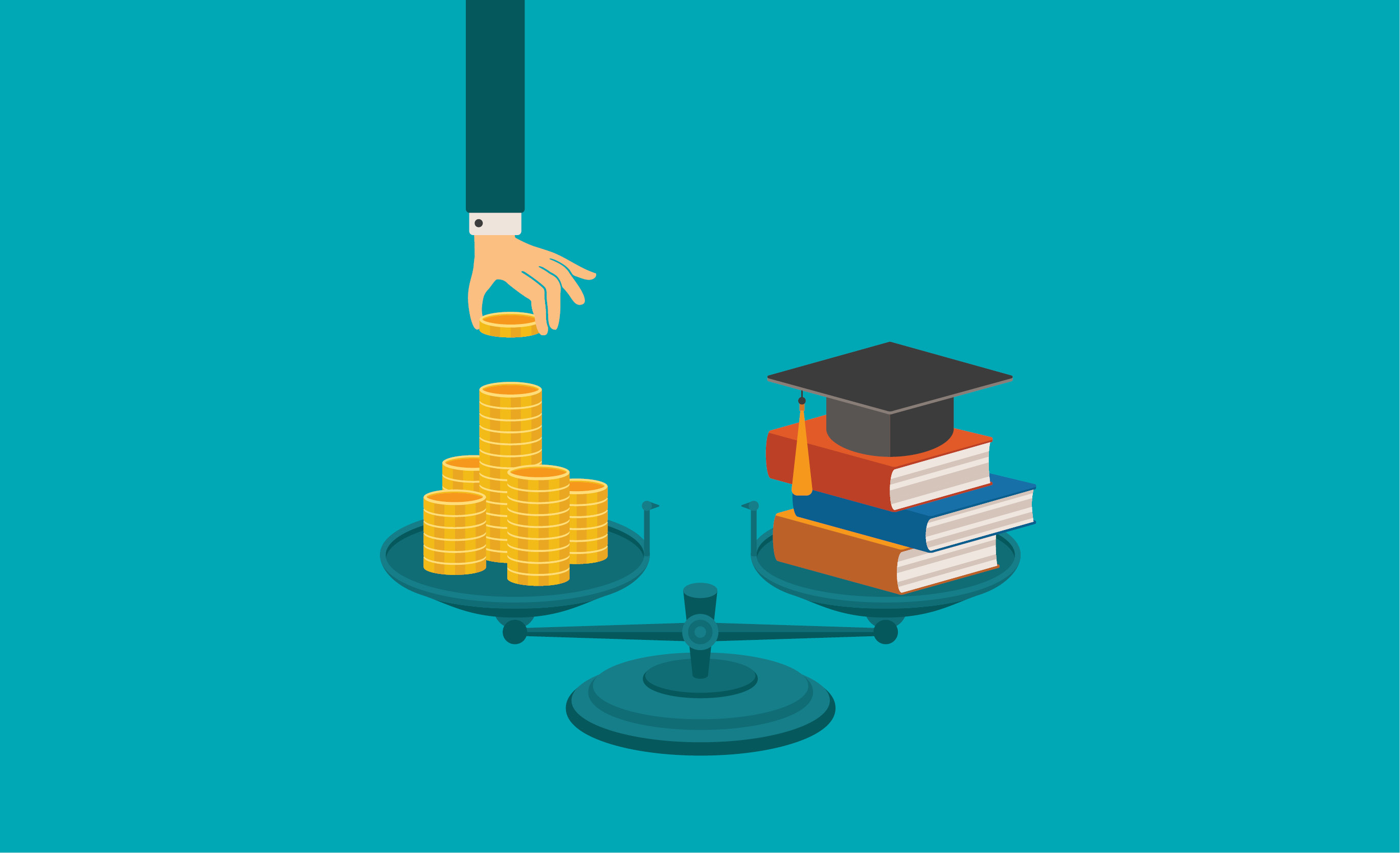The Price of a Good Education

You can blame inflation, high professor salaries, escalating costs for highly-amenitized dorms, and a host of other factors. Regardless, the consensus is clear: a college degree is only getting more expensive to attain in the U.S.
For years, this return on investment has been called into question. In fact, depending on which poisonous report you choose to read, the cost for a college degree appears to be trending towards the outrageous, increasing by more than 500 percent since the mid-80s. Meanwhile, rosier reports about higher earnings for those with bachelor’s degrees offer balance to the debate.
Whether pursuing a degree is worth it may largely lie in practicality — an honest assessment of one’s own financial and living situation, along with one’s academic strengths and capabilities. Do your research and be honest about what you might be able to achieve career-wise, and your answers may very well reveal themselves quite clearly.
Framing the financial issue
As of the 2016-17 school year, the average annual cost for tuition and fees was $33,480 at private colleges, $9,650 for students at in-state public colleges and $24,930 for out-of-state residents at public universities, according to the College Board. Those figures exclude housing, meals, books, supplies and other fees, which could add another $10,000 to $16,000 a year, the report notes.
Do the math and you’ll quickly find that spending at least $20,000 a year to send your child to college is very likely. With no financial help from scholarships, grants or loved ones, amassing $80,000 in debt for a bachelor’s degree feels like a steep price, especially if you’ve chosen one with few guarantees of a job afterwards. And with student debt topping $1.3 trillion, it’s no wonder the debate about whether it’s all worth it is still alive and well.
“I think it’s important to be concerned about those costs,” says K.C. Brekken, an assistant professor at UNLV’s School of Public Policy. “Student loans are a large chunk of our non-housing debt.”
Brekken, however, points to a 2016 Connecticut Education Association (CEA) report that says the majority of student loans, about two-thirds, are less than $20,000. A 10-year repayment plan of about $210 a month, under current interest rates, can be expected when leaving school with $20,000 in debt.
A step, not a guarantee
Alan Benson, a professor at the University of Minnesota, partnered with MIT professor Frank Levy and business analyst Raimundo Esteva to author a 2015 paper analyzing data from the Census Bureau, and the University of California and California State University systems, to gauge return on investment for degrees.
At the same time, the team tried to adjust for a full range of factors, such as dropout rates and delayed graduation. Less than 60 percent of full-time students enrolled in college for the first-time actually graduate within six years, according to the Institute of Education Sciences. The data, the team of researchers reported, challenged President Barack Obama’s statement about a college degree being a “ticket to the middle class.”
“The big takeaway was that the story of college being a ticket to the middle class is a bad analogy,” Benson says. “Our interpretation is that it’s more of a stepping stone…It’s an investment that needs to be managed and there are certain things you’re going to need to do to get there.”
Even still, there’s plenty of data to confirm that you earn more with a college degree. The Bureau of Labor Statistics shows median weekly earnings for a college degree earner to be $1,189, while a high school graduate only earns $718, and someone without a high school diploma only $515.
Add to that, the Brookings Institute’s 2017 Hamilton Project Study, which analyzes economic facts about higher education, notes: “A postsecondary degree can also serve as a buffer against unemployment during economic downturns. Those with postsecondary degrees saw more steady employment through the Great Recession (Autor 2014), and the vast majority of net jobs created during the economic recovery went to college-educated workers (Carnevale, Jayasundera, and Gulish 2016).”
“The reality of the situation is that you’re looking at a future of uncertainty” without a college degree, Brekken adds.
While weighing costs, you also have influencers and technology with their say in the matter. Stories of Internet wealth and people who “made it” without a degree enjoy media play. And others, like PayPal founder Peter Thiel, who once offered $100,000 fellowships to high school graduates not to go to college and instead start a company, don’t help the argument for a college degree.
“That has to be one of the most misguided acts of philanthropy,” Benson says of Thiel’s fellowship offering. “I’m concerned that’s the wrong message to send to people. I don’t think that you have to go to college to be successful, but the statistics and odds point to if you’re skipping college, you’re leaving a lot of money on the table. That’s still the case.”
Choosing a school, degree, and the debt trickle through
For years, liberal arts majors were chastised for the lack of career or job opportunities at the end of the college experience. That ushered in a wave of increasing enrollment in, and advertising for, STEM programs. Hand-in-hand with those trends is the question of where to get what degree and balancing the associated costs.
“One of the biggest lessons coming out of the new data is it really matters a lot more what you study rather than where you study it,” Benson adds, while highlighting how some small colleges enjoy students reporting higher wages due to the mere fact they have more engineering, or other STEM majors, attending them.
Both Brekken and Benson agree to watch out for expensive, for-profit institutions making bold claims about career placement and pay. But even if you’re attending a local public college or university, it’s still important to match your likely career path’s expected pay with the cost of getting that degree. In short: If you’re going to school to become a school teacher, does the degree really need to be from Princeton? And even if you’re looking to go into engineering, does the prospect of higher pay really exist if the degree is from your home state’s public university or an out-of-state Ivy League school? Research is suggesting a resounding “no” to both of these questions.
Brekken highlights the importance of having a post-high school plan that matches the realities of your situation with your talents, strengths, and aspirations.
“You can’t talk about these things early enough,” she adds.
Those attending their local college or university and cutting expenses by living at home can save an immense amount of money, the professor adds. Some can even take advantage of programs, like the Western Undergraduate Exchange, which give neighbor state discounts on tuition, or, in Nevada, the Nevada Promise Scholarship. There are also “last-dollar” scholarships, Brekken emphasizes, available to cover some expenses beyond tuition and books.
“These programs can make the cost of attendance much more accessible,” Brekken adds.
Both researchers stress talking to school counselors and others who have experience with the financial aid process. And above all, don’t take out more than you think you can handle.
“I think right now, part of the liability is that people can take out very large amounts of debt because creditors have protections, and it’s difficult to discharge that debt,” Benson says. “It can make lenders, including the government, more prone to financing almost any degree under any circumstances. I think that’s where we potentially get into trouble.”
That’s why Benson reiterates the importance of being realistic about the earning power of any degree and doing as much research up front to help you understand the realities of your financial commitment.
“Ultimately, the best check is to be armed with the best information,” he says.

